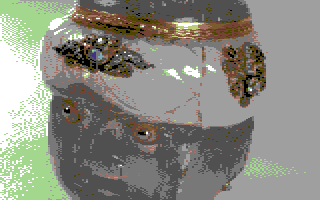
For the past while, Aaron Cope and I have been bouncing around the notion of the acceptability of incomplete object records. We know this from our work with Cooper-Hewitt’s ‘art museum quality’ collection records, and I have many stories from my past at Powerhouse that reinforce the value and potential engagement created through the public release of even the most minimal records. And increasingly even the most staid and conservative institutions around the world are understanding the opportunities.
But we’ve been bouncing the idea around for another reason.
We want to improve our collection records. We want, and need, them to be more than just pointers to shelf locations. We want them to better express the knowledge and at least hint at the impassioned storytelling that the curators engage in when you ask them one-on-one about an object. But we also know that we simply will never have enough staff, let alone curators, to make much of a dent in the museum’s 217,000 objects. There’s just too many objects and too many years of hermetic documentation practices – problems that are common across every museum.
Collectively we’re about to try something new by considering adding a couple of new compulsory cataloguing fields to our records to try to find a middle ground. A middle ground that is achievable in terms of workload, and that exponentially increases the ‘narrative potential’ of our object records with a few simple ‘pointers’.
But there are limits.
Databases are woeful boxes in which to tell ‘stories’. We don’t yet have ‘poetic databases’. And we aren’t likely to in the near future.
We also know that this might be a fruitless exercise. Nick Poole has been good at reminding all of us that ‘metadata’ and ‘content’ are not the same, and that the ‘users’ of each are often very different and have different intentions. Much like the difference in use and experience between exhibitions that use collection objects and the collection objects themselves.
Last week Aaron pointed me to John Powers’ excellent piece titled “The Art Of 8-bit History“.
You really should read it.
The history I lay out may not have the richness of detail we find in an heavily annotated academic survey, but just as an 8-bit portrait is still a photograph, an 8-bit history is still a history. Likewise, the “truth claims” of Zero Dark Thirty, Argo, Lincoln, and even Django Unchained shouldn’t be dismissed because those films simplify complicated histories. While these films can never provide full historical resolution, they remain important looks at important moments.
I grew up on 8-bit computer games for a large part of the 1980s. There’s certainly nothing ‘lesser’ about 8-bit – and many of the best games and interactive fiction of that period are still as immersive and rewarding now as they were then. They just don’t ‘look’ that great – but your brain and imagination fills in the gaps.
Or in design-speak, there are certain affordances that 8-bit provides that are lost with greater resolution.
We shouldn’t underestimate the power of the public, or our visitors, to fill in the gaps too. We might just need to give them a little more than we currently do.
4 replies on “Considering museum collections as 8-bit versions of history”
“Pixelised GLAM Collection Data” now there’s an essay or conference paper title!
8-bit analogy is a good one – I like it. Perhaps it is possible to see this pattern of abstraction (as cultural output) elsewhere in history… ;-)
“You could argue that Manet started it all back in the mid-nineteenth century when he began to remove (abstract) pictorial detail in his paintings such as The Absinthe Drinker (1858-9). Each subsequent generation of artists eliminated yet more visual information in an attempt to capture atmospheric light (Impressionism), accentuate the emotive qualities of colour (Fauvism), or look at a subject from multiple viewpoints (Cubism).
Looking back, it seems inevitable that this process of elimination would eventually lead to detail being removed and the advent of abstract art. Manet and his successors had defined their role as artists in a post-photographic age as one of a social observer, philosopher and ‘seer’, who exposes the hidden truths of life. The camera had liberated them from the day job of producing likenesses and allowed them to explore new ways of representation that might provide previously untapped thoughts and feelings in the viewer.”
(What Are You Looking At? 150 Years of Modern Art in the Blink of an Eye. Will Gompertz. London: Viking, 2012, p151-152.)
http://www.guardian.co.uk/books/2012/sep/09/will-gompertz-what-looking-at
…and so it is with collection description and data presentation practices, as a form of narrative.
http://www.freshandnew.org/2012/08/museum-datasets-un-comprehensive-ness-data-mining/#comment-631747884
[…] 8-Bit Versions of History […]
Thanks for the great post–this discussion is similar to one our institution has been having recently as well. I’m very curious to know more about the new fields you’re considering adding and why you think those might be the key toward higher “narrative potential.”
@google-6f50c83a79663a4b39ca1407fb901a06:disqus we’re not settled on it yet but we’re looking at fields that more explicitly explore use/user and intent – perhaps more akin to the narratives of significance in other institutions (eg http://www.environment.gov.au/heritage/publications/significance2-0/) – but reduced to set of thesauri.
A lot of this has to do with institutional positioning – how is a design museum different from an art museum, and a history museum? what is the specific lens used to interpret and describe? how does cataloguing and the systems used for it bring an inherent framing?